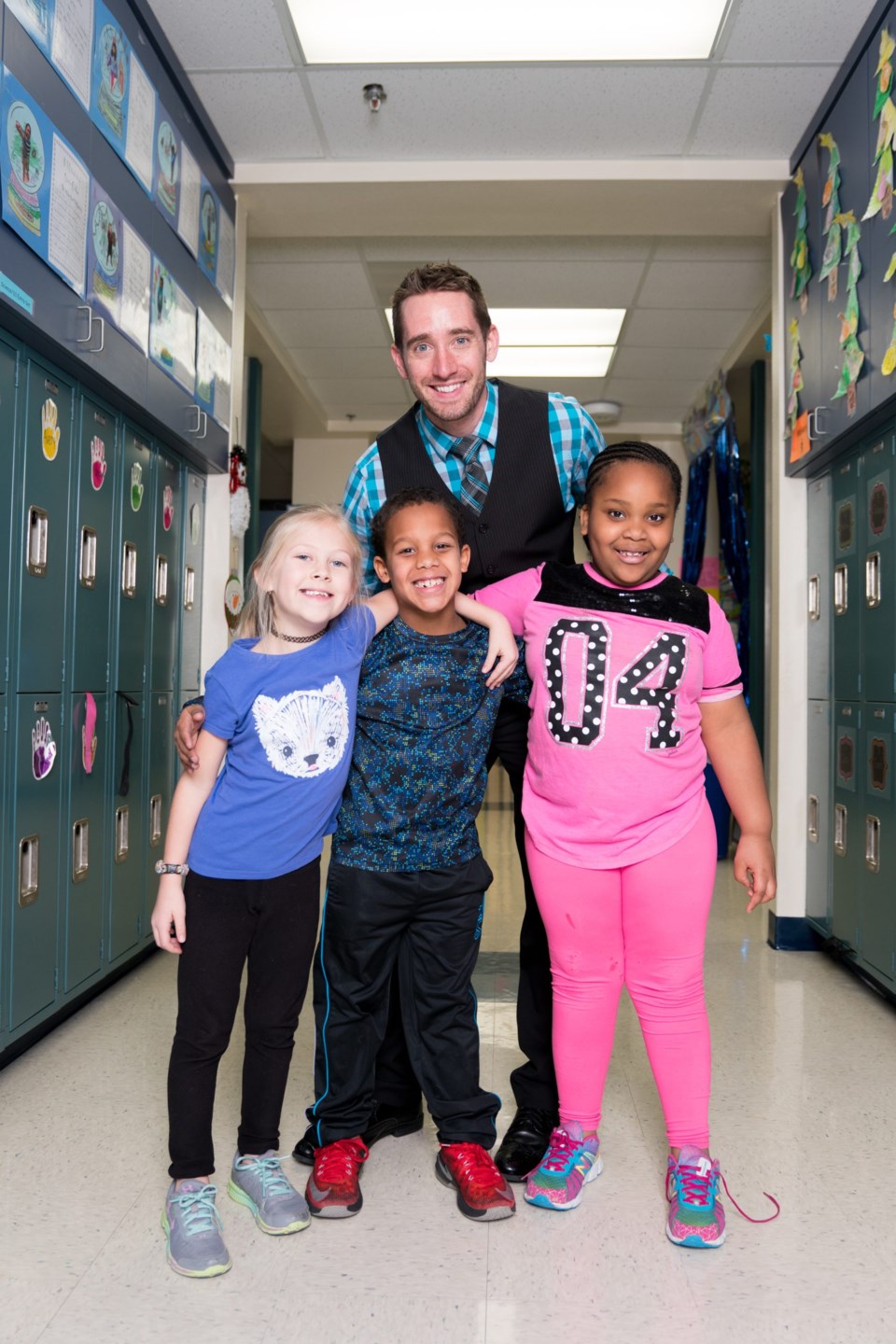Surrounded by colorful shapes, stickers, stuffed animals, two American flags and a map of the world, a group of 18 elementary children huddle in a circle on their classroom floor. Their teacher asks them to share a joy, a concern or both. The teacher begins with her concern: not spending enough time with her grandkids. As they go around the circle, one girl is grateful that no one in her family has the flu, another is worried about the deteriorating health of her grandma and one boy is excited that his mom got a big TV but disappointed that it’s too big to fit in his bedroom.
Gabriel’s* joy is that his mother sent him a birthday card and that he got to see her that week. In a previous session, Gabriel revealed that his mother is in jail and that he was excited to have met her for the first time.
Morning circles are a daily ritual at Christie Elementary in Plano. They are part of a new initiative, Social Emotional Learning (SEL), that focuses on caring for the whole child. Plano ISD defines SEL as “a process through which skills for life effectiveness are intentionally taught and modeled in a safe, supportive and culturally responsive environment.”
In 2011, the Collaborative for Academic, Social, and Emotional Learning (CASEL) did a meta-analysis of 213 studies involving more than 270,000 students to prove the validity of SEL. The results showed an 11 percentile-point gain in academic achievement for students participating in SEL programs compared to students not doing SEL.The idea is to teach children essential life skills such as how to get along and work successfully with others. It’s also ensuring that each child’s emotional needs are met, which in turn enables them to learn more effectively.
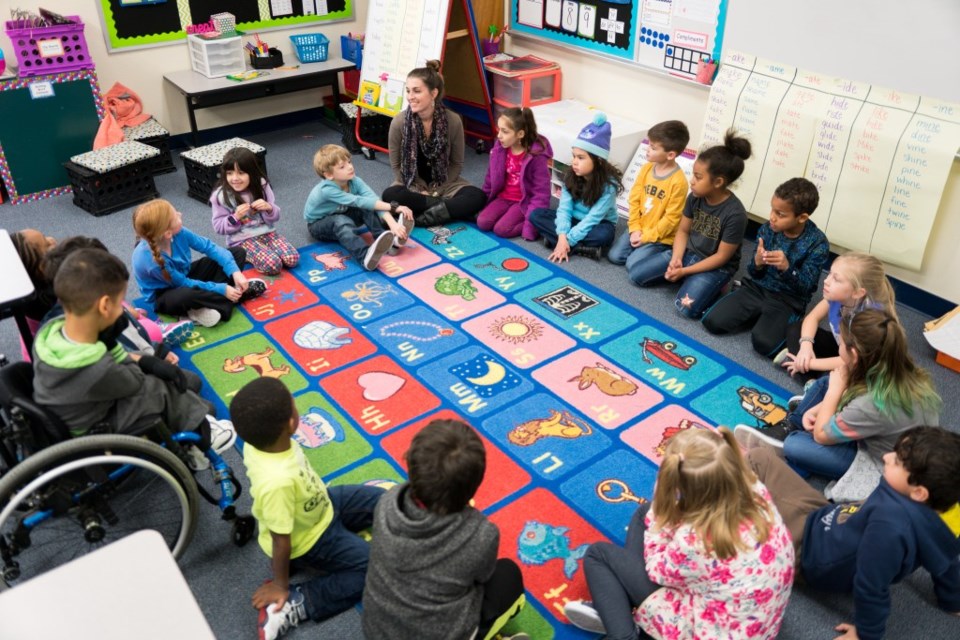
“We’re helping them grow into the best person they can be,” Mark Allen, executive director of PISD Student and Family Services explains. “As a district we’ve worked on those things for years, but we’ve spent the last 18 months studying ways we can be more intentional and direct in teaching these skills.” PISD is now in their first year of actually implementing SEL in schools.
“There’s a lot happening that’s affecting learning,” Julie McGlamery, counselor at Christie, says. “[Before SEL] the teachers were banging their heads against the wall … they were doing great stuff but the kids just weren’t getting it because they were so focused on what was happening at home. We’re supposed to teach them how to read but they don’t care about that; they just need love.”
Regardless of their home situation, all children need love and understanding. Maybe one girl is anxious because her father is in jail; perhaps, another is struggling academically in math; or one little boy can’t concentrate because his dog ran away. Whatever the circumstances, SEL supports all students. “All their needs are the same; every kid wants to feel loved,” says Julie.
Read more: Born with Treacher-Collins Syndrome, Michael Brown is a little different
“SEL is about grace and love and forgiveness,” Ryan Steele, principal at Christie, explains.
[IMPORTANT UPDATE: Ryan Steele is no longer at Christie Elementary.]
SEL’s implementation varies from school to school.
Christie is the largest full title elementary school in Plano. “We have 746 kids, pre-K to fifth,” Ryan explains. “We have homeless kids, but we also have kids from very affluent families; we have kids with a lot and kids that have very little. With different backgrounds come different stories, whether dad’s in jail, or it’s single moms doing the best they can … our kids see a lot.”
SEL has become Ryan’s focus.
“At the beginning of the year, I asked each staff member to write down why they became a teacher,” he says. “Then, on one side of the room, I put ‘knowledge, high stakes testing, sage on the stage’—the reality of being a teacher—and on the other side I put ‘make a difference, love children, have an impact’—the heart behind what goes into it.”
When asked to stand on the side of the room that represented what they had written down, all 82 teachers stood by “love children.”
“That’s when I decided it’s time to start focusing on that,” Ryan says. “Our focus is loving kids. I believe wholeheartedly that they will be more successful instructionally because they are more successful emotionally.”
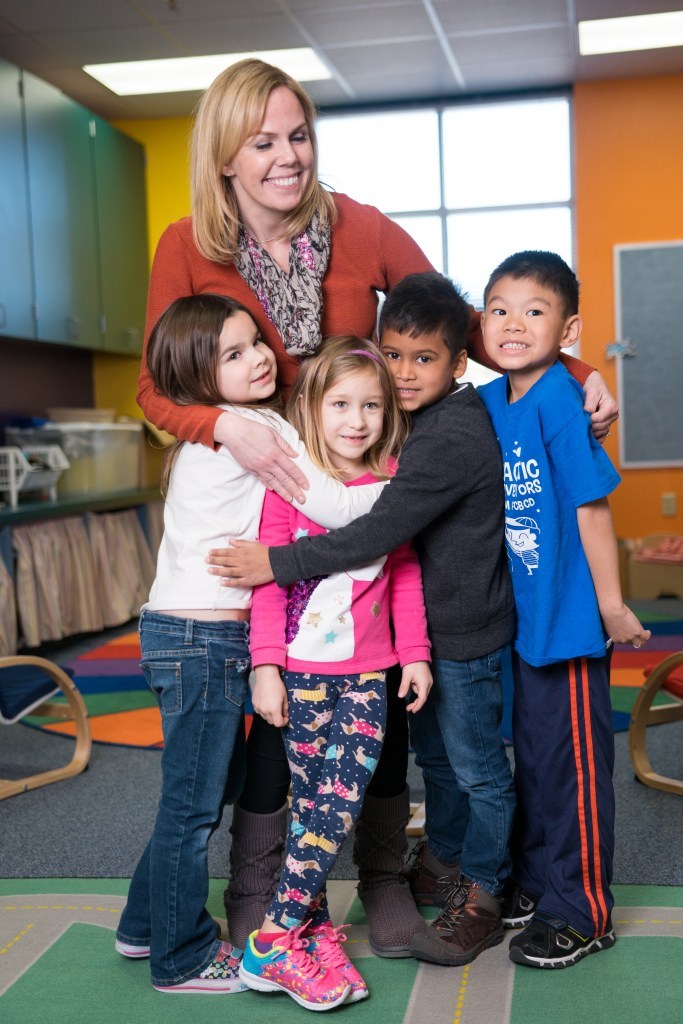
At Christie, Ryan made three things mandatory for every classroom: morning circles, a family wall and a safe spot. The morning circles are already making an impact.
“They’re really starting to share some stuff,” Ryan says. “I can’t control if a third grader says out loud, ‘Dad beat me up last night’ and then you’ve got 20 other kids listening to that. What’s really powerful is we’re seeing empathy on a level that we haven’t seen before.
“When you have kids confident enough to open up and know that they’re not going to feel ridiculed, you will get a lot of instructional gains. And that’s what the teachers are betting on. Overall, it’s going to be worth it because children are being seen as individuals, not numbers.”
Read more: Collin County moms on preschool pressure
“Teachers are sharing in this circle too,” Julie, counselor at Christie, says. “When a teacher says, ‘I went to the park with my dog and my husband’, the kids see that she has a life too; they become more empathetic toward her. It becomes a family. This is their school family.”
In most classrooms, teachers have chosen to combine the safe spot and the family wall by creating a comfortable little corner with cushions, a blanket, maybe a beanbag—one classroom has a tent—and pictures of the students’ families.
“When kids bring a piece of their life into the classroom it creates a sense of ownership, it becomes a place where they belong,” Mark, executive director of PISD Student and Family Services, says. “The classroom becomes a supportive safe place for learning no matter what else is happening in their lives.”
Through following the principles of SEL, discipline is another area that’s undergone a radical shift. Ryan and his team call it “chasing the why.” So, rather than punishing a child who is acting out, the SEL approach is to look for the why causing that behaviour and address the underlying problem.
Ryan and Julie both recall one child they sent to an alternative school because his behaviour was so disruptive.
“In third grade, he was fine—doing well,” says Julie. “In fourth grade, his behaviour completely changed. In fifth grade, it stayed the same.” When his fifth grade tests came back and showed he was functioning at a third grade level, it was easy to see that his behaviour was directly correlated to when he started to struggle academically.
Ryan and Julie have found that there’s almost always a good reason for negative behaviour.
“There are those kids who can push teachers to the point of exhaustion … then, when you start to hear their story, you get it,” says Ryan. “For example, we had one kid who’s quick to anger and emotionally a rollercoaster. Then we find out that his dad just died … and we learn this through talking. All of a sudden, when he’s pushing buttons you think, ‘Okay, I can give you a little more grace, a little more love.’”
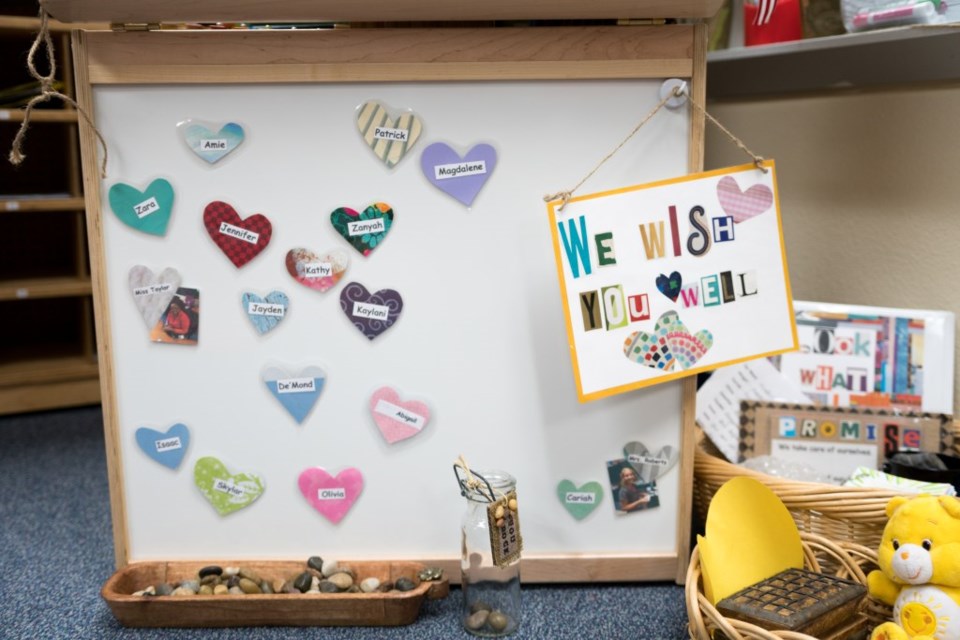
The result has been more, not less, time for learning.
“It allows for more instruction,” Julie says. Previously, [the behaviour] would have been shut down … the student may have even been removed from the classroom. Then that kid is happy because they got to avoid the work they didn’t want to do because its hard. [With SEL] it ends up working in a way that promotes instruction.”
Food insecurity is another common reason for children acting out.
“About eight every morning, I had one student who would just start crying,” Katie Foster, the second grade team leader at Christie, says. It’s something she sees a lot.
“‘Did you eat breakfast?’ That’s usually my first question,” Katie says. “Then I show them how to go through the breakfast line, and I make sure they actually go.”
With the older children, Ryan has placed an emphasis on discipline via restorative practices, a philosophy being modelled across PISD.
Read more: Sara Bonser tells us what’s next for PISD
“Traditional discipline is: here’s the rule, you broke the rule, here’s the consequence,” Mark explains. “But restorative practices are built around the idea of relationships and community; you focus on what harm was caused, not what rule was broken, and from there it’s a conversation about bringing the student and victim together to restore that relationship—the community—and make things right.”
“This focus on restorative practices means taking ownership of our mistakes and making amends,” Ryan says. “It’s not just saying sorry, shaking hands and pretending everything is okay; we’re really going to work on it.”
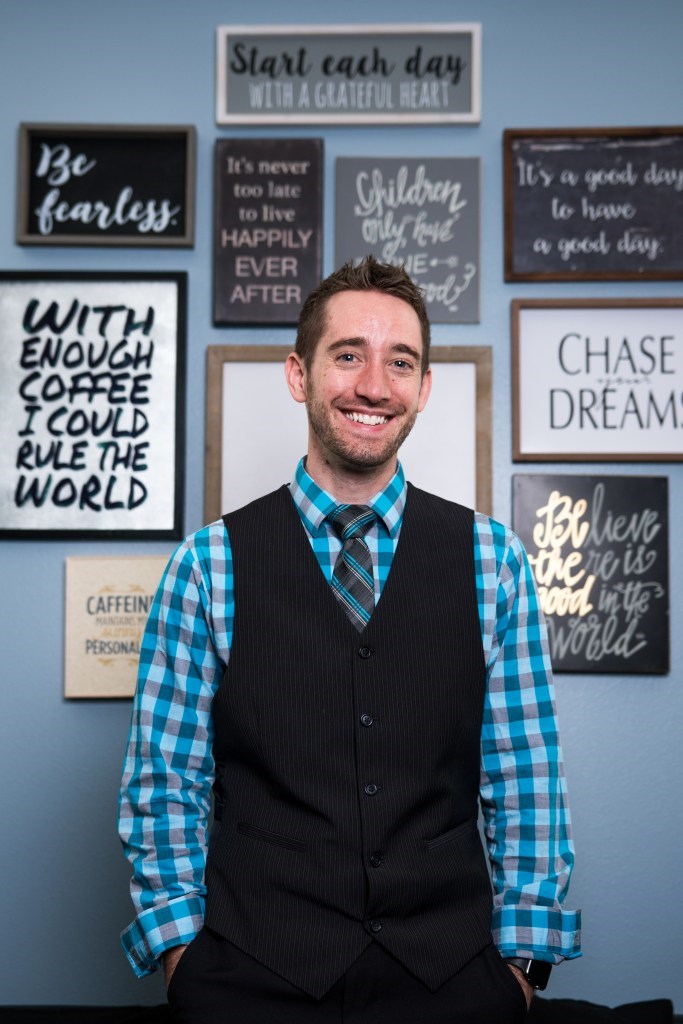
SEL is helping with classroom management for younger children too. “When they become upset, rather than saying ‘power through’ or ‘you can do it’, I close their stuff and say, ‘You need to go take a break’”, Katie explains. “When your lid is flipped all you can focus on is your emotions, so you have to calm yourself down before you can do anything else.”
For Julie, the next step in SEL is educating the parents. “There are kids watching vile YouTube channels, parents need to monitor that … some parents don’t know that a pre-K child still needs a booster seat.” she says. “We are now educators, counselors, pastors, a moral compass; we’re doing a lot. As a parent I know we have got to do our part. We have to put our devices down … because, guess what? Our kids are on apps like Snapchat and may be sending pics they shouldn’t send.”
It’s important to remember that SEL applies to all children, regardless of their background or home life. “With SEL we are supporting kids who have experienced trauma and are struggling with poverty but also students from high-achieving families,” says Mark. “The result is that kids are seeing teachers more as people and teachers are seeing kids as more complex humans. When a teacher understands a child’s strengths they can utilize that to achieve more academic success.”
“When they come into my classroom they’re mine,” says Katie, the second grade team leader at Christie. “They may not have a safe place to sleep at night, they may have a very safe place but they’re still mine when they’re here and I need to love them.”
Read more: PISD Board President Missy Bender shares her story and her hopes for PISD students
For Christie Elementary and other schools across PISD, SEL is in its infancy. “How do we use this to not only dig deeper, but also to push forward instructionally?” Ryan asks. “Because we know who they are and what they need, we can meet their emotional needs and that means we have a much better shot at meeting them where they are instructionally.”
While PISD defines SEL within five key competencies: self awareness, self-management, social and relationship skills, and responsible decision-making, at Christie they have coined their own definition.
“Loving kids; relationships matter; chasing the why; and offering grace: That is what SEL is all about,” Ryan explains. “We’re still a school, we’ve taken on an emotional side but our objective is still the same: our kids need to learn and they need to grow.”

